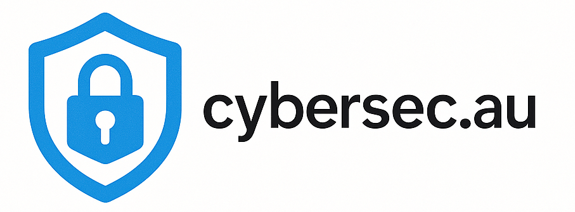The shift to remote and hybrid work has permanently changed how Australian businesses operate—and how they need to think about cybersecurity. With 68% of Australian workers now working remotely at least part-time, the traditional office perimeter has dissolved, creating new challenges and opportunities for cyber protection.
📊 Remote Work Security Reality Check
The New Attack Surface
When your employees work from home, your corporate network suddenly extends to every home office, café, and co-working space in Australia. This creates a massive expansion of potential attack vectors that didn't exist in the traditional office environment.
Home Network Vulnerabilities
Most home networks weren't designed with business security in mind:
- Default router passwords: Many home routers still use factory defaults
- Outdated firmware: Home networking equipment rarely gets security updates
- Shared networks: Business devices sharing networks with smart TVs, gaming consoles, and IoT devices
- Weak Wi-Fi security: WEP or weak WPA passwords
Personal Device Risks
The line between personal and business use has blurred:
- BYOD challenges: Personal devices accessing business data
- Family access: Shared computers with family members
- Software mixing: Personal apps alongside business applications
- Update inconsistency: Personal devices may not receive timely security updates
🏢 Understanding Your New Security Zones
🔒 Secure Zone
Corporate office with managed security
- Controlled network access
- Managed devices
- Physical security
- IT support on-site
⚠️ Hybrid Zone
Home offices and trusted locations
- VPN-protected access
- Company-managed devices
- Basic network security
- Remote IT support
🚨 Risk Zone
Public Wi-Fi and untrusted networks
- Zero trust approach
- Encrypted connections only
- Limited data access
- Enhanced monitoring
Essential Remote Work Security Controls
Secure Remote Access
Your VPN is now your new corporate firewall. But not all VPNs are created equal:
- Business-grade VPN: Move beyond basic consumer VPN services
- Multi-factor authentication: Essential for all VPN access
- Split tunneling: Control which traffic goes through the VPN
- Device compliance: Ensure devices meet security standards before access
Endpoint Protection Everywhere
Every device becomes a potential entry point:
- Unified endpoint management: Manage all devices from a central console
- Endpoint Detection and Response: Advanced threat protection for remote devices
- Automatic updates: Ensure all devices receive timely security patches
- Device encryption: Full disk encryption for all business devices
Cloud Security First
Remote work accelerates cloud adoption, making cloud security critical:
- Cloud access security: Monitor and control cloud application usage
- Data loss prevention: Prevent sensitive data from leaving your control
- Shadow IT discovery: Identify unauthorized cloud services
- Secure collaboration: Encrypted file sharing and communication
Building a Remote Work Security Policy
The Home Office Security Checklist
Help your employees create secure home offices with this practical checklist:
🌐 Network Security
- ✅ Change default router password
- ✅ Enable WPA3 Wi-Fi encryption
- ✅ Update router firmware
- ✅ Create separate guest network
- ✅ Disable WPS and unnecessary services
💻 Device Security
- ✅ Install business antivirus
- ✅ Enable automatic updates
- ✅ Use strong device passwords
- ✅ Enable device encryption
- ✅ Configure screen lock timeout
🔐 Access Security
- ✅ Use company VPN always
- ✅ Enable MFA on all accounts
- ✅ Use password manager
- ✅ Avoid public Wi-Fi for work
- ✅ Log out when finished
🏠 Physical Security
- ✅ Position screen away from windows
- ✅ Lock devices when away
- ✅ Secure document storage
- ✅ Shred sensitive documents
- ✅ Control visitor access
Communication Security
Remote work relies heavily on digital communication, making it a prime target:
- Secure messaging: Use business-approved communication platforms
- Video call security: Enable waiting rooms and passwords for meetings
- File sharing: Use corporate-approved cloud storage only
- Email security: Enhanced protection for remote email access
Managing the Human Factor
Remote Work Security Training
Your employees need different skills for remote work security:
- Home network setup: How to secure their home office
- Phishing awareness: Recognizing attacks targeting remote workers
- Incident reporting: How to report security issues when working remotely
- Physical security: Protecting devices and information at home
Creating Security Culture Remotely
Building security awareness is harder when teams are distributed:
- Regular security check-ins: Include security topics in team meetings
- Gamification: Make security training engaging and competitive
- Success stories: Share examples of employees catching threats
- Open communication: Encourage questions and reporting without blame
Technology Solutions for Remote Work Security
Zero Trust for Remote Work
Zero Trust architecture is perfect for remote work because it assumes no location is inherently safe:
- Identity verification: Verify every user and device
- Conditional access: Grant access based on risk factors
- Continuous monitoring: Monitor all activities, not just login
- Least privilege: Give users only the access they need
Managed Security for Remote Teams
Many Australian businesses are turning to managed services providers to handle the complexity of remote work security. Leading managed IT services specialists like Affinity MSP offer remote work security packages that include:
- 24/7 monitoring of remote endpoints
- Secure remote access solutions
- Cloud security management
- Remote employee training and support
- Incident response for distributed teams
The Future of Remote Work Security
Remote work isn't going away—it's becoming the new normal. Australian businesses that invest in proper remote work security now will have a competitive advantage in attracting talent and maintaining productivity.
The key is to stop thinking about remote work as a temporary arrangement and start building security architectures designed for a permanently distributed workforce.
Secure Your Remote Workforce
Remote work security requires specialized expertise and tools. Get professional guidance on protecting your distributed team from Australia's cybersecurity specialists.
Get Free Security Scan